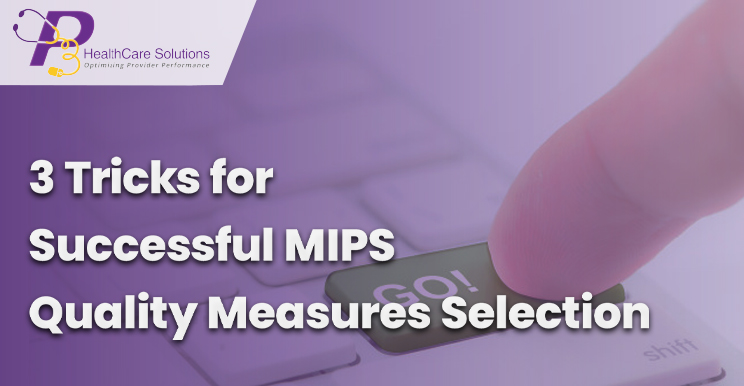Approximately 42 MIPS Quality measures have been removed from MIPS 2020 reporting list. On the other hand, CMS added three new quality measures and seven specialty measures sets.
Up until now, you must know about them, but as we are moving towards the conclusion of the 2020 performance year, it is time to reflect on our practices, strategies, and selected measures to know if they can result in higher points or not.
When you select measures based on the specialties, it becomes easier to present your expertise to the CMS. To ensure the success of your quality data submission with maximum performance, we suggest selecting measures as follows.
1. Look into “Denominator” of Each Quality Measure
Denominator refers to the eligible population being measured, specified in the CMS’s official documentation.
It also includes
- CPT/HCPCS billing codes
- Diagnosis codes
- Demographic information (gender/age, etc.)
Looking into the denominator is crucial for MIPS’s successful submission for a variety of reasons.
You can Know What Quality Measures Qualify for your Eligible Patients
CMS now wants clinicians to report QPP MIPS measures for which they have eligible cases. A patient is only eligible when their visit meets the measure criteria/denominator documentation statement.
If you see no patient matches with the denominator, unfortunately, you don’t have an eligible case to report and it can make you lose MIPS points.
Check How Many of Your Patients Meet the Criteria of Measures
QPP MIPS requires at least 70% of reported cases to qualify for each measure. Therefore, checking out the denominator will help to determine which patients fall for which measure.
For Instance, out of 100 hundred total patients throughout the year, physicians must report at least 70 patients.
Billing management systems and Electronic Healthcare Records (EHRs) can help you find the correct number of eligible patients.
Each Measure Should be Handled Separately
When you go through the records for QPP MIPS, you will see each patient will vary from measure to measure. Each measure has its specific demographics with specific conditions. Thus, not every patient qualifies for the same measure.
2. Check How Often the Measure is to be Reported
CMS also explains how many times a measure is to be reported throughout the performance year.
The frequency for each measure varies. This is an important tip to maximize performance.
3. Remove the Topped Out Measures from your List
Topped-out measures don’t contribute to the program anymore and are excluded from the list. If you report any of them, it would be difficult to achieve higher points.
It’s Time for MIPS 2021 Reporting Data!
With the above-mentioned three tricks in mind, one has to be mindful of what measures to choose that result in a high MIPS score.
The best decision that practice managers can make is to consult a MIPS Qualified Registry. With March 31, 2022, approaching fast, one thing is certain, clinicians who manage to successfully report data to CMS could leverage the reporting flexibilities this year. With lesser chances of getting a penalty, there is a high chance to compensate for the lost revenue during the peak corona times.
Now is the chance to target up to 5% of MIPS 2021 incentives. Moreover, with exceptional performance, clinicians can qualify for a $500 million bonus pool.
Get More Help from P3Care
These top three strategies can clear the fog around measures’ selection. Other than these, P3Care is here to help valuable clinicians make informed decisions.
Our team provides you with all the latest updates and changes in reporting criteria along with data submission to maximize revenue from QPP MIPS.
